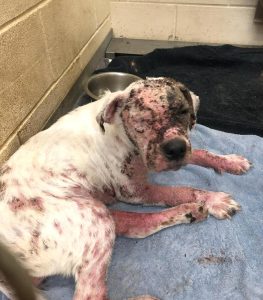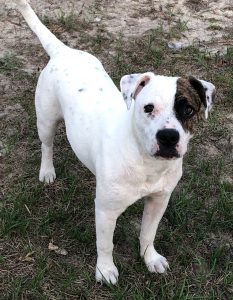Module 3: Healthcare practices for common medical conditions in shelters
Hairless Dogs and Crusty Cats
Think about the shelters you have worked in…..what were the policies and protocols for dogs and cats with demodectic or sarcoptic mange? Did the shelters initiate treatment for these cases or did they transfer them to rescue groups for treatment? Were these cases euthanized if no rescues took them? If the shelter provided treatment, were there written SOPs to follow for diagnosis and treatment?
Dr. Wright decided to create SOPs for mange diagnosis and treatment. Before starting, she researched the most effective treatments for demodex, sarcoptic, and notoedric mange mites as well as Otodectes ear mites in dogs and cats.
A recent article reviewed the off-label use of isoxazolines for successful treatment of demodectic mange in dogs and cats.
The drugs in the following list are currently labeled for prevention of flea and tick infestations. Although they are not labeled for treatment of demodectic, sarcoptic, and notoedric mange in dogs and cats, numerous studies, clinical reports, and field trials indicate these drugs eliminate the mite infestations and achieve resolution of clinical signs more rapidly than other products such as Advantage Multi (imidacloprid/moxidectin) and Revolution (selemectin). Here are some isoxazoline products available in the US. New products are added each year, so this list may not represent the most recent availability.
Here is a summary for extralabel use of isoxazolines for treatment of mites that cause skin and ear disease as supported by clinical studies and trials.
For canine and feline demodex mange treated with one of the isoxazoline products, the typical time for elimination of mites and resolution of disease is 2 to 3 months.
For canine sarcoptic mange and feline notoedric mange treated with one of the isoxazoline products, the typical time for elimination of mites and resolution of disease is 1 to 2 months.
For canine and feline otodectic mange (ear mites), all of the products listed in the mange treatment table are effective in eliminating the mites in 1 month, or 2 months in severe cases.
Here are some success stories for isoxazoline treatment of demodectic, sarcoptic, and notoedric mange in shelter dogs and cats.
Test Your Knowledge
Mange SOPs
After completing her research, Dr. Wright created SOPs for treatment of demodex, sarcoptes, notoedric, and otodectic mange for the Gatorland Animal Services shelter. The SOPs address diagnosis, treatment, and special housing needs based on whether the mange is contagious to other animals and people and on time required for recovery.
-
Remember this dog with demodex mange in the Gatorland shelter?
-
Here he is 3 months after treatment with Bravecto while in a foster home.



